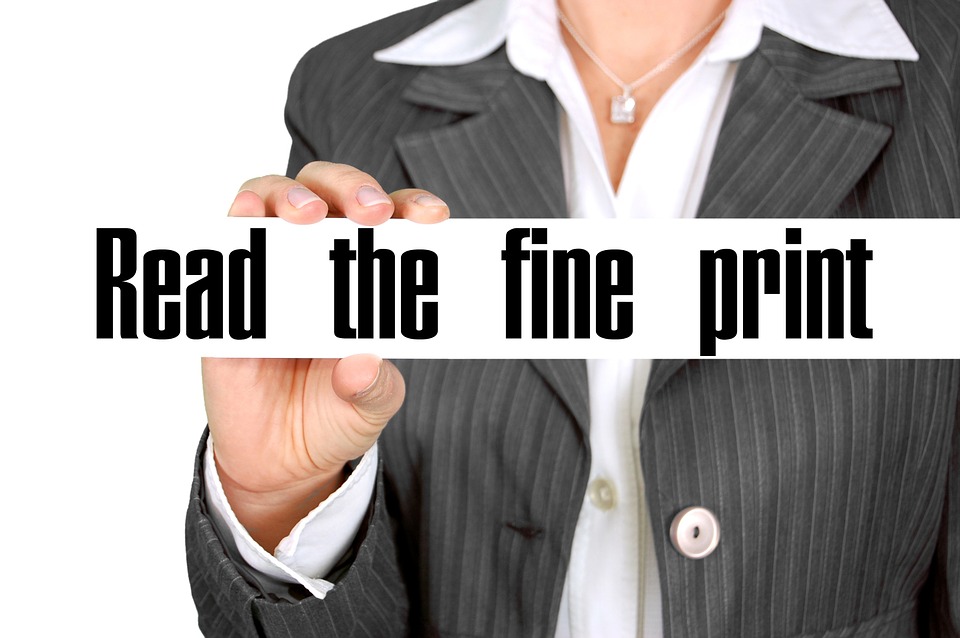There’s no question that authors can save a lot of money by buying premade book covers for their books rather than hiring a designer to custom-make a cover. But there’s a lot of “fine print” – that annoying agreement that really needs to be read before you sign on the dotted line. Because in some cases, that fine print may have clauses that are unacceptable to you – after all, every author’s needs and level of acceptance is different.
 So we checked out several different online sources that offer premade book covers, and we’re going to highlight some things in their agreements that illustrate why you need to read each agreement carefully before you hit “accept”. (We’re not going to list the names of these websites or companies because agreement conditions can change at any time, and not all companies have all of the same conditions.) Again, it’s up to you to decide whether a company’s conditions are acceptable to you.
So we checked out several different online sources that offer premade book covers, and we’re going to highlight some things in their agreements that illustrate why you need to read each agreement carefully before you hit “accept”. (We’re not going to list the names of these websites or companies because agreement conditions can change at any time, and not all companies have all of the same conditions.) Again, it’s up to you to decide whether a company’s conditions are acceptable to you.
Okay, let’s go.
Sign before you save. Yes, that’s right – not sign before you buy, you need to sign their full purchase agreement in order to save covers that you’re interested in on their site. Now, it makes sense that you’d need to open a basic account in order to save your selections in one place so you can come back and make a decision, but it was a little unusual to have to sign the full agreement just to create an account. On the up side, you don’t have to pay anything and it doesn’t say you’re obligated to buy from them, but you do have to read the entire agreement just to save your selections.
Limited book sales. Sometimes companies limit how many books can be sold when you purchase a cover before you have to pay more money. For example, one company’s agreement states that if you use one of their stock images and sell over 250,000 copies – a combined total of both print and e-books – you must pay an additional licensing fee, which could be ongoing or one-time.
In some cases, illustrated covers are handled differently than stock image covers. Also, it’s your responsibility to notify the company when your sales reach that magic number.
Each cover is original and sold only once…but… But that can be a relatively loose statement when dealing with stock images. Because “original” is a relative term. We found a number of cases where the same cover – the exact same image – was being sold more than once because it had slightly different lighting…very slightly different. But that was enough to consider each one “original”.
In other cases, the same background was used multiple times with different colorings or with a different person in the foreground, or a woman’s gown was a different color – you get the idea. Also, if another company uses the same stock photos in the exact same way, well, that’s permissible.
Some other things to check out:
- Is the price limited to ebook or does it include print?
- Does the print price include a back and spine if you want one now or later? Is there a limit to the amount of time you can wait before ordering the back and spine?
- Does the company offer immediate downloads of the cover?
- Can you change the font style, size or color?
- Check whether the website or artist requires copyright credit and how that credit should be given – better safe than sued.
- Some companies offer social media exposure or permanent exposure on their site with a link to where your book can be purchased – a definitely plus!
So the takeaway is that yes, premade book covers can save you lots of money and you can find some great stuff out there, but you definitely need to check through the selections, read the fine print and FAQs carefully, and if you don’t see the answer to your question or the answer is too general, ask before signing or buying.